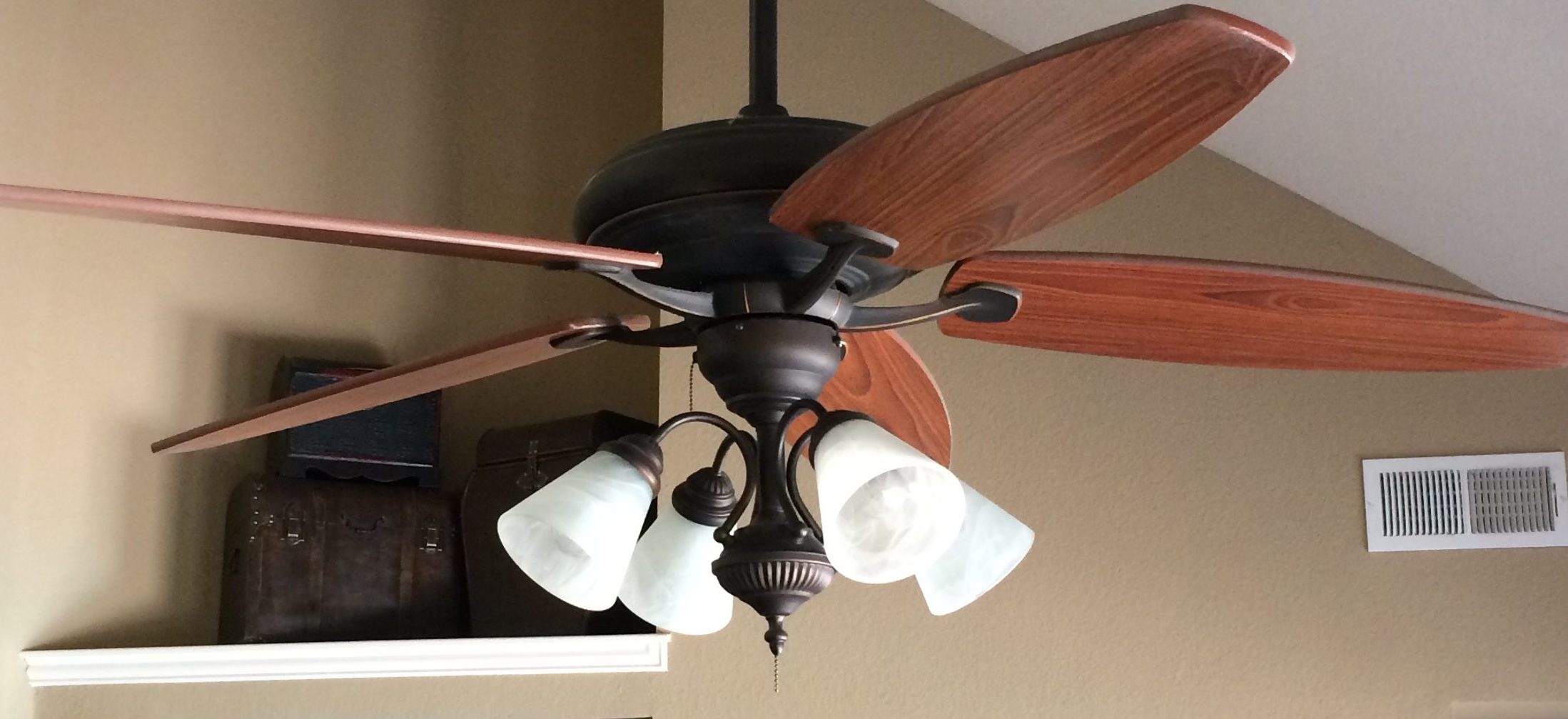Lower electricity costs with ceiling fans. Summer is drawing near and the importance of managing our electricity bill becomes more important as we head into the cooling season. Shopping for cheap electricity rates is one of the best ways to lower your monthly energy bill. There are also a number of practical and affordable ways to reduce your electricity costs. Ceiling fans, for example, are one of the best ways to improve the cooling efficiency of your home this summer.
How Ceiling Fans Work
First, let’s dispel the myth that fans decrease the temperature of a room. Ceiling fans, or any fans for that matter, simply move the air in the room. The draft coming in to contact with your skin makes the room feel cooler. This allows you to be comfortable at a higher thermostat setting. Higher thermostat settings result in energy savings. It really is as simple as that.
The important thing to remember is that ceiling fans only make a difference when you are in the room. Your bed, sofa, and recliner are immune to the effects of the draft created by the ceiling fan. Having a fan operate at night in an unoccupied room is a waste of energy. There are certain situations, like room with odd dead spaces, where there are benefits to circulating the air even when people are not present. However, those situations are rare. It is usually best to turn off the ceiling fan when leaving a room for more than just a few minutes.
Fan Sizing and Placement
There are a number of good resources available to help select the optimum ceiling fan size for a room. Most home improvement stores can also assist with ceiling fan sizing. The American Lighting Association has some general guidance for homeowners:
|
Room Size |
Fan Size |
|
Up to 75 sq. feet |
36 inches or less |
|
75 to 144 sq. feet |
36 to 42 inches |
| 144 to 225 sq. feet |
44 to 50 inches |
| 225 to 400 sq. feet |
50 to 54 inches |
Also, keep the ceiling height in mind. Most fans are designed to work best when placed 8 or 9 feet above the floor. Any lower could be dangerous. Placing the fan higher may reduce the cooling effect of its draft. Be sure to consider whether you need a model that mounts flush with the ceiling or hanging model. Hanging models comes with a standard downrod (usually 6 inches) but longer downrods are available for purchase to get the fan to optimum height.
Ceiling Fan Energy Savings
How much electricity you save by using ceiling fans depends on your electricity rate, how much you increase your thermostat, and the efficiency of the fan. High efficiency fans can use as little as 18 watts per hour while the most powerful models use closer to 100 watts per hour. The average off-the-shelf fan from a home improvement store uses closer to 60 watts per hour on high speed.
Using this average model as an example, it would cost only about 7 cents to operate the fan for 12 hours with a 10 cent/kWh electricity rate. Operating the fan at high speed 24/7/365 would cost around $53 per year. The important thing to keep in mind is that the cost is that operating a ceiling fan costs on pennies a day.
The savings come from how much you can bump up your thermostat. Depending on outside temperatures, increasing your thermostat by one degree can reduce your electricity usage by 6 to 8%. Over the course of the summer, that adds up to some serious savings. So crank up your ceiling fans, bump up your thermostat 2 or 3 degrees, and lower your electricity bill this summer.



Impressive post you published here with valuable knowledge!